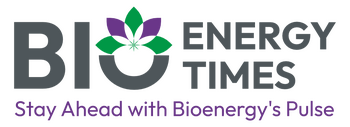The rapid rise in energy consumption in India is attributed to growing industrialization, urbanization, and increasing incomes. A recent report by the India Energy and Climate Centre (IECC) predicts that India’s energy consumption will increase three to four times over the next decade.
The report further notes that India is expected to be the largest contributor to the global increase in energy demand between 2020 to 2040.
In comparison to other industrialized economies, India lags by USD 1-2 trillion in its energy infrastructure investment, which is likely to take place in the next 2-3 decades.
Per capita electricity consumption in India is much below the global average, but total electricity demand is growing at 8-9 per cent per year and is projected to double by 2030 if compared with demand in 2020.
Due to global warming and increased capacity for expenditure, the demand for electricity for cooling appliances is expected to rise six-fold by 2040.
The IECC report also forecasts that the growth in India’s energy demand will be matched by significant reductions in the costs of clean energy technologies, particularly for wind turbines, solar PV cells, lithium-ion (Li-ion) batteries, and hydrogen electrolysers.
India currently has more than 130 GW of installed renewable energy capacity. At the United Nations Climate Change Conference of the Parties (COP-26) in Glasgow in November 2021, Prime Minister Modi announced a target of 500 GW of non-fossil fuel power generation capacity by 2030.
Over the past five years, India has added 55 GW of renewable capacity, which is 18 GW more than the 27 GW added from coal-based power plants during the same period.
In 2020, investments in renewables exceeded those in fossil fuels for the fifth consecutive year. However, concerns remain about the capacity value of renewable energy and its ability to generate electricity during peak load periods.
Despite this, coal still accounts for over 70% of electricity generation in India. The country possesses some of the largest coal reserves globally. Nevertheless, renewables are now cost-competitive, even in regions previously considered less suitable for renewable generation.
The report indicates that the cost of co-located solar and storage projects, with approximately 2-4 hours of energy storage to meet evening peak demand, is expected to be Rs. 3-4/kWh by 2030. This is lower than the variable cost of nearly half (80-100 GW) of India’s existing coal capacity.
Recent large-scale Round-The-Clock power and storage auctions by the Solar Energy Corporation of India (SECI) and the National Thermal Power Corporation (NTPC) have highlighted the cost-effectiveness of energy storage in India.
The IECC report concludes that energy efficiency measures could potentially avoid 40-50 GW of additional load during evening peak hours.
The India Energy and Climate Centre produced this report in collaboration with key government stakeholders, regulatory commissions, and the Bureau of Energy Efficiency.
To read more about Green Hydrogen Industry News, continue reading BioEnergyTimes.com














